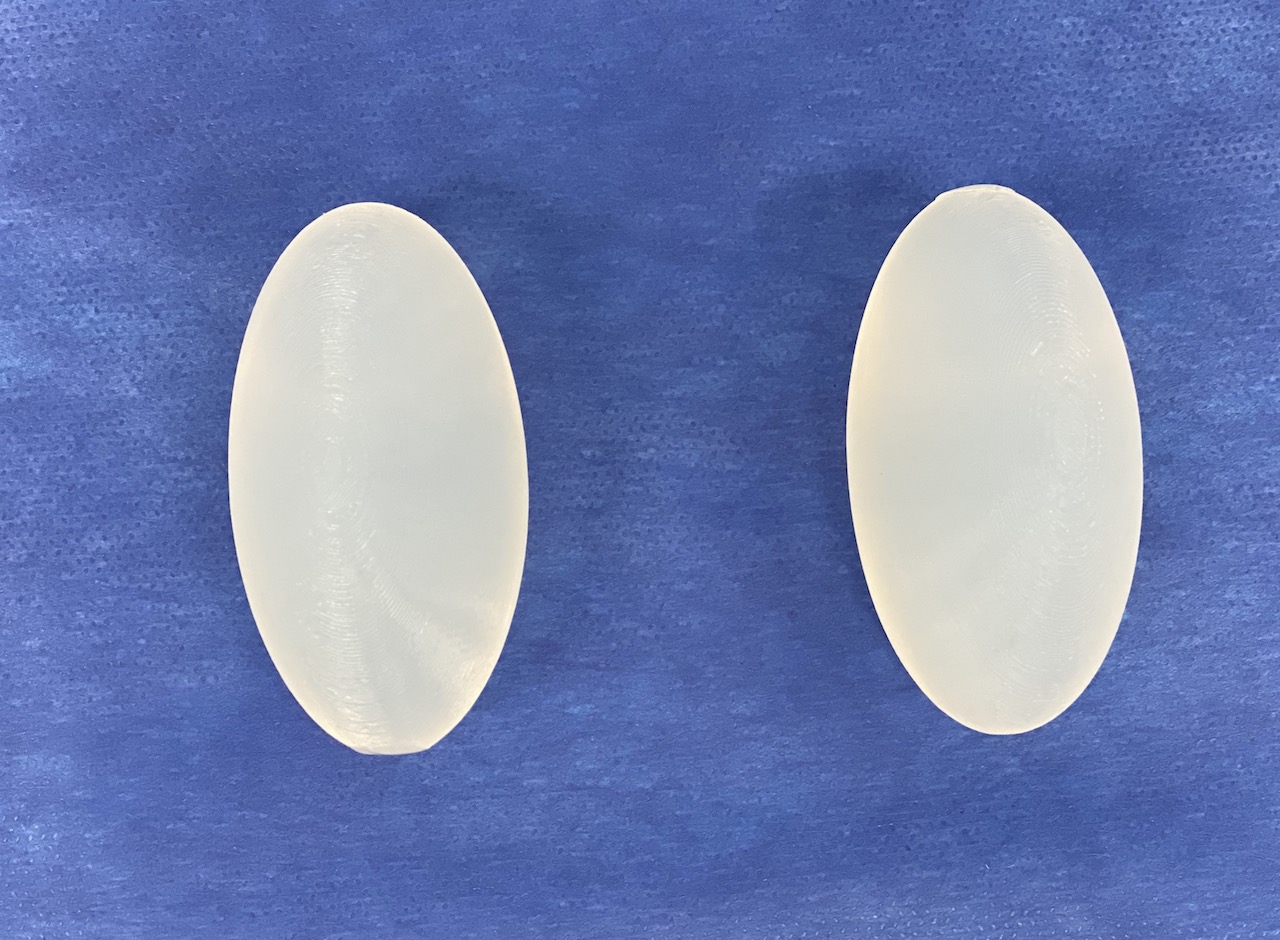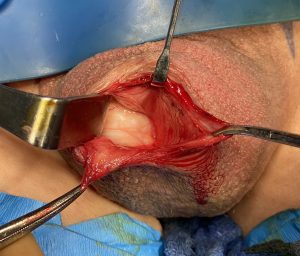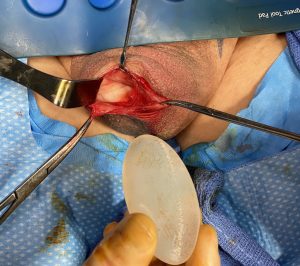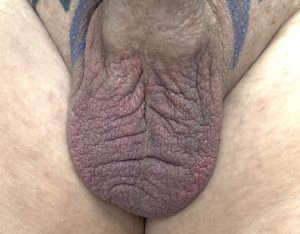Background: Tucked between the legs and somewhat hidden beneath the scrotal sac lie the testicles in men. Everyone knows testicles are paired in number and have a bit of rounded shape, which is why they are referred to as ‘balls’. But in reality their shape is not that of concentric circles. Rather their shape is usually oval or egg-shaped and rarely are they perfectly symmetric in size. Their typical lengths are 4 to 5cms with widths of 3 to 3.5cms. Typical volumes are in the 12 to 20cc range. Testicle size and volume throughout life is not stable with known decreases in both with age and hormone supplementation being major factors in their inevitable shrinkage.
When seeking testicle enhancement, which differs from that of replacement, pertinent questions include method and size/shape of the enhancement. Testicles can be enhanced by either the side by side or wrap around implant placements. By far the side by side method has the lowest risk of postoperative complications but is also the most misunderstood. On the surface having four testicles inside a scrotum seems like an unaesthetic choice. But what counts is what is seen on the outside. An implant laying next to a natural testicle can overwhelm it in appearance if the size difference is significant enough. As a general rule an implant can obscure a natural testicle in appearance if it is 100% bigger in size/volume. In other words the concept works if the implant is big enough and the testicle is small enough.
Also a testicle implant has one significant aesthetic advantage over a natural testicle…it is not attached or tethered by a cord. Thus an implant can hang lower than a natural testicle and, when placed through a low midline raphe incision, becomes the dominant structure in the scrotum…if it is big enough.
The shape of the testicle is definitely oval as opposed to round. It is not clear why it is oval shaped but most likely that is due to being attached to a cord and being suspended inferiorly.
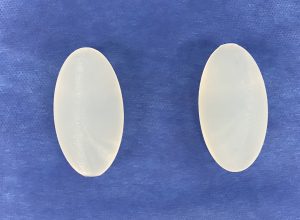
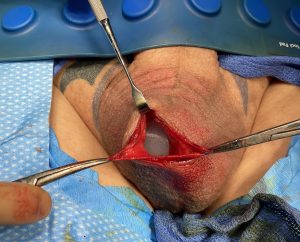
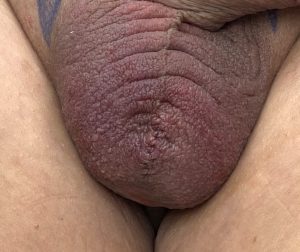
The shape of the testicle is definitely oval as opposed to round. It is not clear why it is oval shaped but most likely that is due to being attached to a cord and being suspended inferiorly. In this patient an uncommon testicle implant shape was used which, although was what the patient wanted and he had verified this design by making his own implant sample shapes, it seemed not the ideal shape. But in placing them and looking at their effect, oblong they did not appear nor did the scrotum appear abnormal or deformed in any way.
Case Highlights:
1) The most common and lowest risk testicle implant procedure is the side by side or displacement method.
2) The success of the testicle implant displacement method is that the implants must be at least 50%, and preferably 100% bigger, than that of the natural testicles.
3) The shape of the custom testicle implant can be determined by the patient, some preferring a more oblong rather an an ovoid shape.
Dr. Barry Eppley
Indianapolis, Indiana

